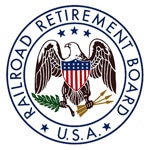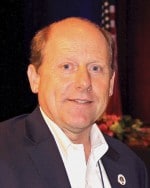Sometimes it takes something major to happen for people to sit up and take notice. A wake-up call, if you will.
From the standpoint of our national contract negotiations, our union got another wake-up call even before our first session that is scheduled for the last week in February.
On February 11th, a U.S district judge, who was appointed by President Donald Trump last year, ruled against our union in a lawsuit over crew-consist moratoriums. We’re now appealing that decision.
The court ignored the Railway Labor Act strictures with regard to the moratorium provisions which have been upheld for decades. We are being pushed down the tracks where the carriers want this to go.
This fight is not over, and we have another that is about to begin.
There’s a lyric that Anne Feeney wrote that gets at the heart of this matter and that unions have embraced: “United, we bargain. Divided, we beg.”
We now have a coalition of 10 rail unions about to begin negotiating together in this upcoming round of bargaining. I have been in close contact with the Brotherhood of Locomotive Engineers and Trainmen (BLET) President Dennis Pierce throughout as carriers have tried to attack two-person crews.
Our two unions are linked in the courts. We’re linked in the halls of Congress. We’re linked in the locomotive cabs. We are now linked at the bargaining table.
Our attorneys are working together on behalf of both our organizations to fight the ongoing court cases as carriers try to manipulate the system with their deep pockets by attempting to get long-standing precedents and legislation overturned.
Legislative representatives from both our organizations are meeting with members of Congress and state legislatures to get the word on for two-person crew laws. The carriers, however, are using every means to fight to try to get two-person crew laws of seven states thrown out, which we have opposed.
Members from both organizations are sitting in cabs of freight trains staying alert and keeping one another safe through each and every shift, ready at a moment’s notice to respond when things go wrong. We need to carry this effort on in crew consist.
BLET President Pierce recently stated in a message to his union:
“I share this information to make it clear to BLET’s membership that our proud Union stands with our Brothers and Sisters in SMART’s Transportation Division in the fight to preserve two-person crews,” Pierce wrote. “Be it on the regulatory front, the legislative front, in court or at the bargaining table, BLET is working with SMART-TD to protect the interests of all operating employees.”
I, as President of the SMART-TD, want to make it clear to our union that we stand united with the BLET.
Any attempt to drive a wedge between our organizations in order to get officers and members alike to disregard the goal at hand — preserving two on the operating crew — plays into the carriers’ hands. It gets them closer to what they want: Fewer workers, more money in their pockets, a less-safe (cheaper) work environment and weakens all of rail labor. Two unions with members and with leadership going in opposite directions would make it easier for carriers to accomplish their goal of eradicating jobs in favor of their idea of “innovation.”
I also agree with President Pierce when he stated:
“The bottom line is this: In order to preserve two-person crews, each Union must protect and preserve its member of those crews. With only a few exceptions, BLET cannot bargain nationally for Conductors. The same is true in reverse; with only a few exceptions, SMART-TD cannot bargain nationally for Engineers,” he wrote. “For these reasons, and regardless of the fearmongering going on, BLET cannot ‘sell’ Conductor positions to benefit Engineers in national negotiations, and the same in true in reverse for SMART-TD. Again, each Union must protect its half of our two-person crews for all operating employees to prevail.”
Brothers and sisters, this is an uneasy time for every member of every labor organization involved in these negotiations as the carriers continue to cut personnel. The operating craft unions have the buzzsaw of technological threats from the carriers aimed straight down the middle of the locomotive cab. Don’t be persuaded by the fearmongering that attempts to divide us.
You are going to hear rumors out there. You are going to hear speculation. You are going to have people beating their chests and criticizing decisions made years ago by prior leaders for putting us in what could be a critical — maybe the most critical — moment in rail labor’s history with the in-cab role of the conductor in the balance. Ignore all of that noise. We are moving forward, not backward!
This is not the time for anyone to give in to anxiety or paranoia or “what-if” scenarios. When all SMART-TD members put our names on the dotted line to pledge for membership to this organization, we pledged to fight for each other in solidarity. When elected president of the Transportation Division last August, I took an oath to act in solidarity for the best interest for the organization and for all whom we represent. When I signed our organization on as a member of the 10-union Coordinated Bargaining Coalition, I pledged to bargain in solidarity with those other rail labor organizations in national talks.
All of us need to be focused on the situation that lies ahead and the decisions to be made for the future of rail labor and the crews who operate freight trains. We need to reinforce our lines of defense and prepare to go on the offense by reaching out to the public and to the media. Instead of wondering “what’s the union doing for us?” it’s time to get to the local union meetings and get involved. It’s time for the spouses to join the SMART-TD Auxiliary and get involved. It’s time to up your SMART-TD PAC contributions, then get with your state and U.S. legislators, so they hear your voice this election year. It’s time to get involved in the SMART Army. It’s time to stand strong!
Brothers and sisters, BLET President Pierce and I are united. We will work in solidarity, together, to keep two on the crew as we bargain. We will work together to keep you informed. We know this issue is too important to our memberships and for the public’s and our safety not to.
In solidarity,
Jeremy Ferguson
President — Transportation Division

 The Railroad Retirement Board (RRB) has announced its schedule of pre-retirement seminars for the spring through the fall of 2020. The RRB hosts these seminars for rail employees and spouses who are within five years of retirement.
The Railroad Retirement Board (RRB) has announced its schedule of pre-retirement seminars for the spring through the fall of 2020. The RRB hosts these seminars for rail employees and spouses who are within five years of retirement.